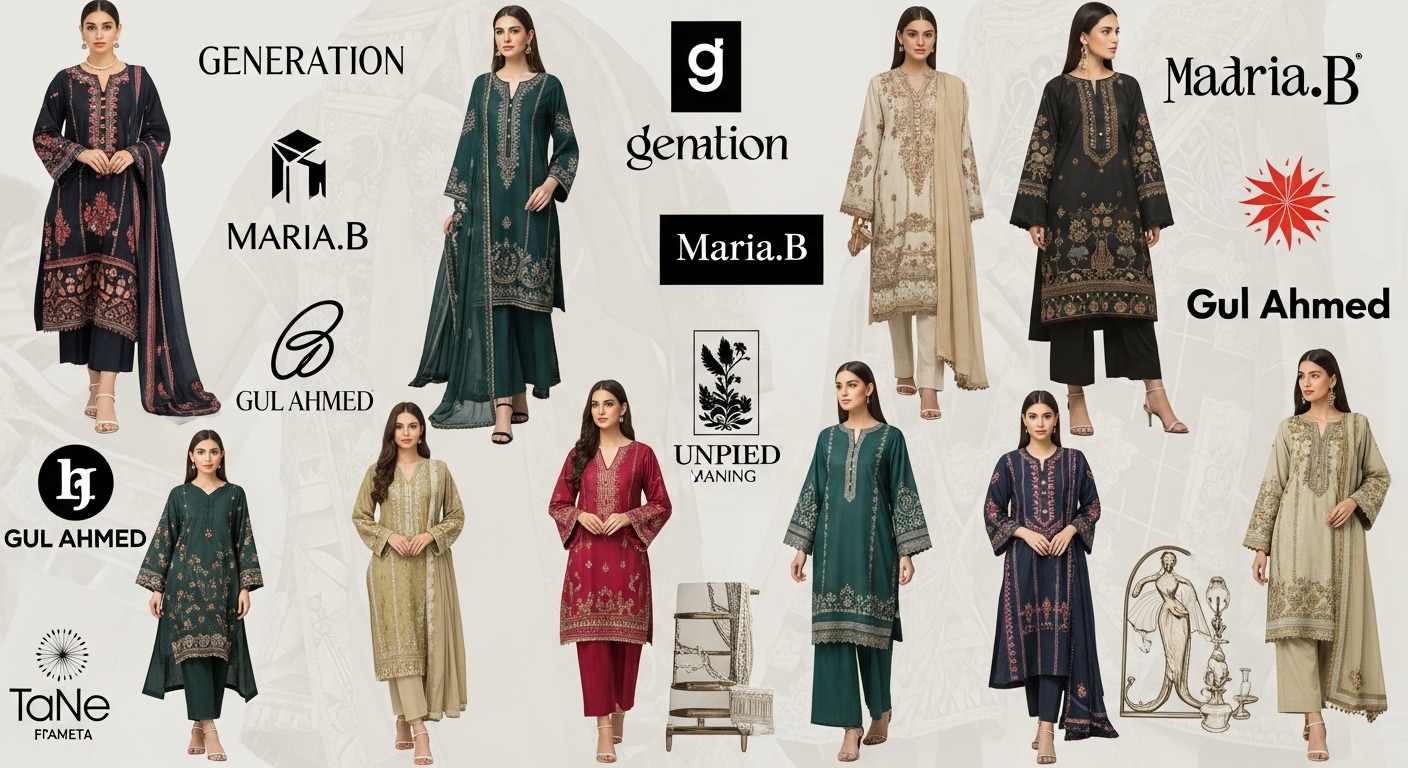The Flourishing World of Pakistani Clothing Brands: A Blend of Tradition, Trend, and Global Recognition.

The fashion and textile industry in Pakistan has seen an impressive evolution over the past two decades. Once dominated by traditional tailoring and local markets, the landscape is now home to a growing number of fashion-forward clothing brands that cater to both Eastern and Western aesthetics. From high-end designer labels to budget-friendly outlets, Pakistani clothing brands are making a mark not only at home but also across international borders.
The Rise of the Fashion Industry
Pakistan’s clothing sector, historically driven by textile exports, has rapidly diversified into a dynamic fashion economy. Cities like Karachi, Lahore, and Islamabad are now buzzing with flagship stores, fashion outlets, and design studios that serve millions of consumers across the country. Fashion weeks held annually in Lahore and Karachi highlight the country’s vibrant style scene and serve as launchpads for new trends and young designers.
The surge in digital media and e-commerce has also played a significant role. Many brands now offer online shopping platforms, catering to a tech-savvy generation that values convenience and style equally. As a result, the reach of Pakistani clothing brands has expanded from local malls to international runways and wardrobes.
Diversity in Design: East Meets West
What makes Pakistani clothing brands stand out is their ability to seamlessly blend traditional artistry with modern fashion sensibilities. From intricate hand embroidery and block prints to minimalistic cuts and contemporary silhouettes, these brands cater to a wide spectrum of tastes.
Brands like Khaadi, Gul Ahmed, and Alkaram Studio have become household names for their high-quality fabrics and versatile collections that include everything from casual lawn suits to formal evening wear. These brands prioritize cultural identity while adapting to global fashion trends.
On the other hand, designer labels such as HSY, Sana Safinaz, and Maria B focus on luxury couture and bridal wear. Their collections, often adorned with rich embellishments and premium fabrics, showcase the richness of Pakistani heritage in the form of lehengas, ghararas, and intricately designed sherwanis.
Affordability and Accessibility
While high-end brands cater to the elite, there is no shortage of affordable clothing lines that ensure fashion is accessible to all segments of society. Brands such as Bonanza Satrangi, Limelight, Beechtree, and Outfitters target middle-class consumers, offering trendy, seasonal collections at competitive prices.
These brands have also taken steps to expand their physical presence by opening stores in second-tier cities like Multan, Sialkot, and Abbottabad, thus decentralizing fashion access and bringing stylish options to a broader audience.
The Influence of Social Media and Celebrity Endorsements
Social media platforms like Instagram and TikTok have revolutionized the way fashion is marketed and consumed in Pakistan. Clothing brands are now investing heavily in influencer collaborations, online campaigns, and celebrity endorsements to drive sales and brand recognition.
Well-known personalities such as Mahira Khan, Ayeza Khan, and Atif Aslam are often seen endorsing local clothing lines, which adds both glamor and credibility to the brands. In addition, fashion bloggers and stylists contribute to shaping public taste and bringing emerging brands into the spotlight.
Global Expansion and Export Potential
With a vast diaspora in the Middle East, North America, and Europe, Pakistani clothing brands have tapped into overseas markets. Many brands now operate international outlets in cities like Dubai, London, and Toronto, and offer international shipping through well-established e-commerce platforms.
This expansion not only boosts brand visibility but also contributes significantly to the country’s economy through foreign exchange earnings. It also helps promote Pakistani culture on a global stage, as foreign consumers become more familiar with traditional garments such as kurtas, dupattas, and shalwar kameez.
Challenges and the Road Ahead
Despite the growth, the industry faces challenges such as inflation, rising production costs, and fluctuating cotton prices. Moreover, competition from imported brands and the need for sustainability in production processes pose ongoing concerns.
However, with strong domestic demand, innovative design talent, and increasing international interest, the future of Pakistani clothing brands looks promising. Government support for small and medium-sized fashion enterprises and greater investment in textile infrastructure could further accelerate growth.
Conclusion
The evolution of Pakistani clothing brands reflects a broader cultural shift in how the nation expresses identity, creativity, and modernity. From traditional roots to contemporary expressions, these brands are setting new benchmarks in fashion while proudly representing Pakistan on the global stage. With a blend of style, substance, and strategy, Pakistani fashion is not just surviving—it is thriving.
